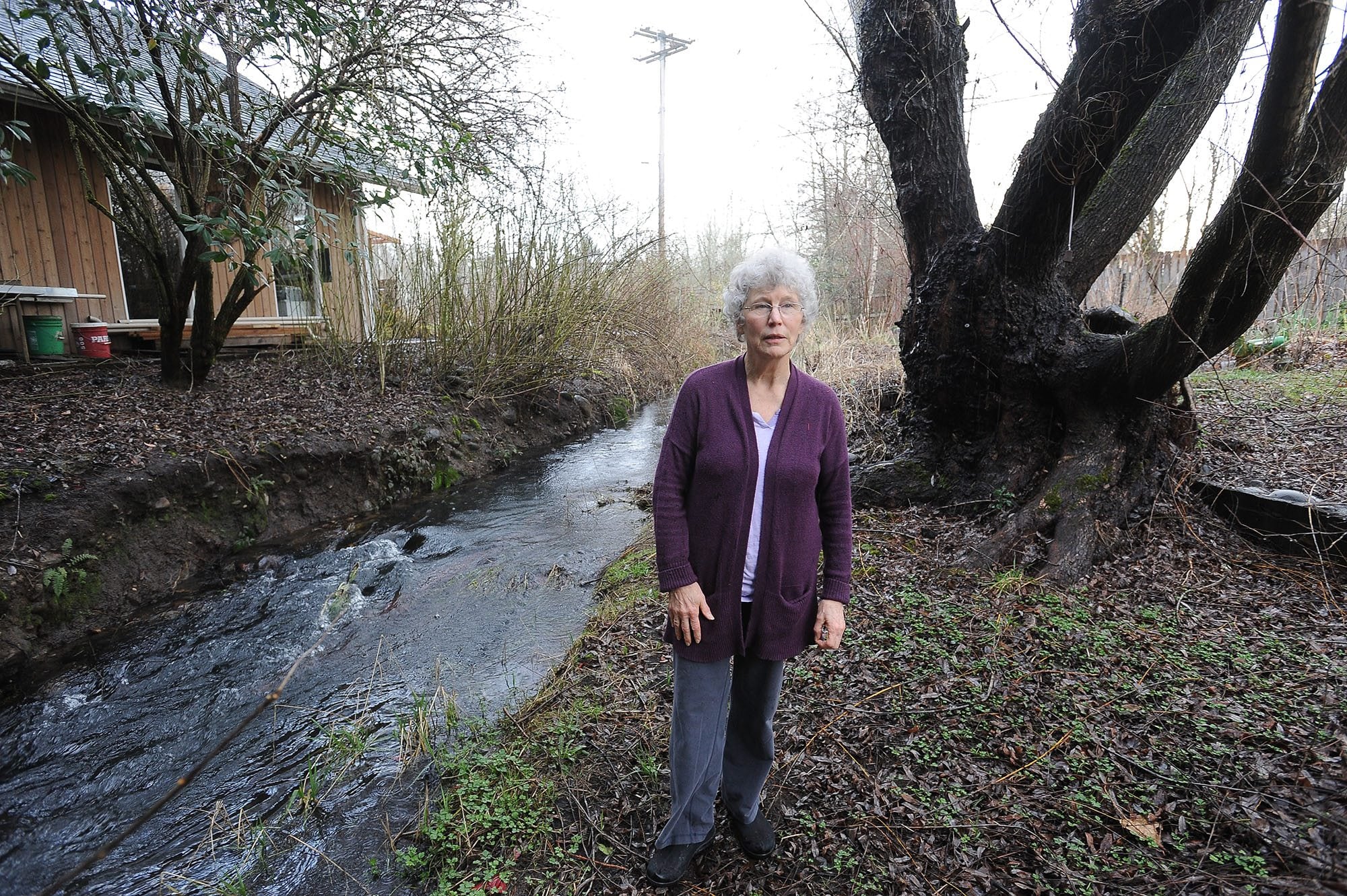Oakbrook-area neighbors have been worrying for years about the fate of a little Burnt Bridge Creek tributary called Peterson Creek.
Or is it a ditch? Or a channel? A developer who wanted to plunk down some houses nearby preferred to downgrade the waterway as a “ditch.” When East Vancouver chip manufacturer SEH America secured a permit to release more cleaned-up industrial wastewater into it, Peterson was a “channel.”
But Eileen Anderson, who has lived here for 41 years, knows it’s always been Peterson Creek. Her children played in it. Her late husband cared for it. Today, neighbors like Anderson and the Keims, Ray and Lela, are glad to have new rain gardens up and down Northeast 98th Avenue filtering roadway runoff before it flows into Peterson.
But so much more is needed, they say. The Vancouver Watersheds Alliance, a nonprofit public-private partnership that’s made a name for itself by organizing great big work parties along the banks of Burnt Bridge Creek, agrees.
Peterson is plagued by the same problems as Burnt Bridge Creek, according to VWA program manager Jeannie Hoxer. Invasive species like English ivy, blackberries and reed canarygrass tend to take over and depress biodiversity along the banks. That leads to erosion. So does the cutting down of backyard trees that fix the soil — which also lets the water warm up in the sun. That’s bad for fish and other wildlife, which need cooler water to thrive. Backyard pollutants, from dog waste to fertilizers and pesticides, run through the soil and into the stream.
There’s not much point to working so hard at public spots along local waterways without addressing the harm that can be done at the private sites right next door, VWA executive director Sunrise O’Mahoney has said. That’s why the VWA, with the support and sponsorship of the city, has started reaching out to private people bordering Peterson and Burnt Bridge creeks to offer free help and ongoing partnership. It’s especially targeted the Oakbrook area, with its big Beaver Marsh, Oakbrook Park and Peterson Creek, Hoxer said.
Hoxer went door-to-door in Oakbrook about a year ago. She was afraid of a lot of slammed doors, but instead drummed up so much interest that neighbors like Anderson and the Keims starting holding their own meetings on the topic. “Usually people along the creek have this shared interest,” Hoxer said. “Oakbrook is going to be our pilot project.”
Flexible but firm
What VWA offers to appropriate and interested homeowners through its “Project Restore” is a careful site assessment and an offer to coordinate projects and labor with volunteers as well as Vancouver’s public works team. Removal of invasive species, replacement with useful natives, bank stabilization, tree planting and more are all available. So is developing a long-term planting plan. It all depends on the site and the homeowner’s individual wants and needs, Hoxer said.
“It’s about finding a happy balance between ecological benefits and private property,” said Hoxer.
But if you think this sounds like a free landscaping service, think again. The offer of free help and free plantings comes with a 10-year, legally binding contract among the VWA, the city and the landowner. “If we’re putting in all this time and money and effort,” Hoxer said, “we want to know that the improvements will be maintained and won’t be torn out again.” The contract specifies how and by whom the new plantings and other improvements will be maintained. Some landowners are excited to participate personally, Hoxer said, while others are glad to let paid staffers or volunteers do the dirty work. If it’s the city doing the labor, the contract will also specify when and how workers have access to the yard.
It’s all flexible, Hoxer said, but it’s all firm. The Keims say they love it.
“To have an ecologist come around and help us put the correct vegetation in the correct site so the stream gets healthy — that is thrilling to me,” Ray Keim said. “And we don’t have to pay for it.” And, in the long run, a healthier yard and healthier stream will certainly make for healthier property value, Lela Keim said.
Hoxer said “Project Restore” is booked up with participating property owners for about the next year or so. But she’s eager to hear from folks who might be interested in future efforts. A long waiting list might be the way to even more grant funding, she said.
“We don’t want to wait,” she said. “We want to restore the banks section by section until it’s seamless. Our ultimate goal is to have the salmon back in Burnt Bridge Creek.”




